Ah, do you feel that? The sun shining down on your face and a brisk breeze in the air? Spring is coming and we’re ready for it! Early spring in Northern America offers a variety of vegetables that thrive in cooler temperatures.
Here are fifty early spring vegetables for your garden that you can get started very, very soon!
-
Leaf Lettuce
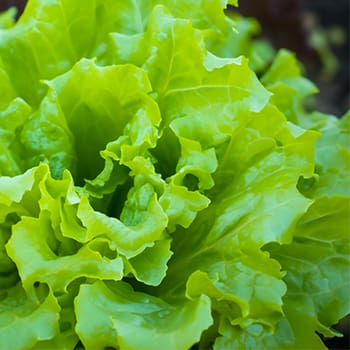
Almost all varieties of leaf lettuce mature quickly, especially before summer gets here. A window box will keep you in a quick and easy supply of salads. With a variety of types to choose from, lettuce is a reliable early crop that can be continuously harvested for fresh salads throughout the season, making it a staple for any homestead garden.
-
Spinach
The majority of spinach varieties are fully mature and are ready for eating between 25 and 35 days old. Packed with nutrients like iron and vitamins, spinach is a cold-hardy green that thrives in early spring, providing an abundant harvest for fresh salads, smoothies, or cooked dishes.
-
Kale
All but the largest varieties of kale are ready for consumption no later than day 50. As a resilient and nutrient-rich green, kale is a valuable addition to any homestead garden, offering a steady supply of leaves for soups, stir-fries, and salads even during cooler weather.
-
Certain Types of Iceberg Lettuce
This one is tricky; some forms of iceberg lettuce take their time to form tight coils. If looking for a quick pick, we recommend reading the back of the seed packets in stores near you since local varieties and availability will change depending on the area.
-
Bean Sprouts
Ready in literally just a few days, mung bean sprouts are delicious and pop when you bite them! Bean sprouts are simple to grow indoors with minimal equipment, making them a convenient addition to homestead kitchens. They require indirect sunlight and regular rinsing to prevent mold growth, and they’re rich in protein, fiber, and nutrients, offering a versatile and nutritious addition to salads, stir-fries, and sandwiches, enhancing the nutritional value of homestead meals.
-
Alfalfa Sprouts
Usually ready in a week or less, though some forms may pop up a little bit later on. Alfalfa sprouts are quick and easy to grow indoors, requiring only a few days to mature, making them a convenient addition to homestead kitchens. They thrive in indirect sunlight and are packed with vitamins and minerals, offering a fresh and crunchy addition to sandwiches, salads, and wraps, providing a nutritious boost to homestead meals.
Related: How to Prepare Your Soil For Your Spring Garden
-
Bok Choy

Bok choy, but especially baby bok choy, is wonderful when tossed on a grill and marinated in teriyaki sauce. Blistered and lightly roasted are our favorites. Bok choy is a mild-flavored Asian green that thrives in cooler temperatures, making it perfect for early spring planting. Its tender leaves and crunchy stems add texture and flavor to stir-fries, soups, and salads, providing a delicious and nutritious addition to your homestead meals.
-
Swiss Chard
Another colorful and easy-to-grow salad green, most Swiss chard types are ready for pruning around a month old and may be finished growing around the same time. Both beautiful and nutritious, Swiss chard is a multi-purpose green that provides a continuous harvest throughout the season, offering tender leaves for salads and hearty stems for sautéing or steaming.
-
Arugula
The arugula is usually ready for trimming after 2-4 weeks. With its peppery flavor and quick growth, arugula is a flavorful addition to early spring gardens. Its versatility makes it suitable for salads, sandwiches, or garnishes, adding a fresh and zesty touch to homestead meals.
-
Most Mustard Greens
Though there are some types of mustard greens that are not quite as quickly growing as others, almost all of them are ready for stewing or salads by day 50. Mustard greens are a peppery and nutrient-packed leafy green that thrives in early spring gardens. Their robust flavor adds depth to salads, soups, and stir-fries, providing a delicious and nutritious addition to your homestead meals.
-
Turnip Greens

Turnip greens can be harvested again and again so long as you don’t mind a smaller turnip beneath the ground. Turnip greens are a nutritious and easy-to-grow crop that prefers full sunlight and well-drained soil, making them ideal for homestead gardens. Harvesting the young, tender leaves promotes continuous growth, and they can be enjoyed in salads, soups, or sautéed dishes, providing a delicious and nutritious addition to homestead meals.
-
Collard Greens
Almost all collard green varieties are ready by day 55, with the massive leaves quickly drying and yellowing in hot weather. Collard greens are a nutrient-rich leafy green that thrives in cooler temperatures, making them ideal for early spring planting. Their hearty leaves can be enjoyed raw in salads or cooked in soups, stews, or stir-fries, providing a delicious and nutritious addition to your homestead meals.
Related: 25 Crops You Can Grow In Buckets All Year Round
-
Senposai
A bright and very green Asian vegetable that is seen in a lot of stir-fries and other quick-fry type dishes. Seen largely throughout Asian countries in the East, you’ve almost certainly had this plant in multiple dishes without knowing it!
-
Perilla
A tiny green is primarily used in Vietnamese cooking but is sometimes seen in other Asian dishes, especially those of island Asian countries. Licorice-like taste. Perilla is an easy-to-grow herb that thrives in well-drained soil and partial sunlight, making it a versatile addition to homestead gardens. Its aromatic leaves can be used fresh in salads, wraps, or as a garnish, and it’s known for its medicinal properties, including anti-inflammatory and antioxidant effects.
-
Spring Onions

Plant spring onions with jugs over them as soon as the ground is able to be dug and you’ll have lots of spring onions before summer! Spring onions are a versatile and easy-to-grow crop that thrives in full sunlight and well-drained soil, making them perfect for homestead gardens. They can be harvested young for their tender green tops or left to mature for their flavorful bulbs.
-
Leaf Cabbage
All common leaf cabbage varieties are ready for eating between 30 and 60 days from planting. Leaf cabbage is a cold-hardy and low-maintenance crop that thrives in full sunlight and well-drained soil, making it suitable for homestead gardens. It’s easy to grow from seeds or transplants and produces abundant leaves that can be used fresh in salads, soups, or cooked dishes, providing a nutritious and flavorful addition to homestead meals.
-
Baby Artichokes
While normal-sized artichokes do require a longer growing period, feel free to harvest them early. Most artichokes can be harvested and used around the 35-day mark. Baby artichokes are a gourmet crop that requires full sunlight and well-drained soil to thrive, making them suitable for homestead gardens with proper care. They’re harvested young for their tender hearts and can be steamed, roasted, or grilled, providing a delicious and nutritious addition to homestead meals.
-
Endives

Endives are a frequently unsung hero of the salad world. If you’re a big fan of greens, try these! Endives are a cold-hardy and low-maintenance crop that prefers partial shade and well-drained soil, making them ideal for homestead gardens.
-
Celery
Celery is a very diverse vegetable with many different grow times, though some are ready within 50 days of sowing. Celery is a crunchy and flavorful vegetable that excels in early spring gardens. Its tender stalks add texture and flavor to soups, salads, stir-fries, and snacks, providing a delicious and nutritious addition to your homestead meals.
Related: Veggies You Only Plant Once And Harvest Forever
-
Black-Eyed Peas; Certain Varieties
There are two genera of black-eyed peas (cowpeas). One takes approximately 80-90 days to mature, the other matures in about 55 days. We recommend the latter. Black-eyed peas are a warm-season crop that thrives in full sunlight and well-drained soil, making them suitable for homestead gardens in warmer climates. They’re rich in protein and fiber, and their versatile beans can be enjoyed fresh, dried, or cooked in a variety of dishes, providing a nutritious and satisfying addition to homestead meals.
-
Mache

Another bright green for your garden, this one is somewhat bitter but a nice change from so many others! Mache, also known as lamb’s lettuce or corn salad, is a cold-hardy and low-maintenance crop that thrives in partial shade and moist, well-drained soil, making it ideal for homestead gardens.
-
Leeks; Certain Varieties
Specifically, look for smaller leeks that say “early” in the name! Leeks are mild-flavored alliums that thrive in cooler temperatures, making them perfect for early spring gardens. Their tender white bulbs and green tops add flavor and texture to soups, stews, casseroles, and sautés, providing a delicious and nutritious addition to your homestead meals.
-
Potatoes
Baby red and baby Yukon gold potatoes will be ready before Summer Solstice!
-
Buttercrunch Lettuce
Buttercrunch lettuces of all varieties will be ready within 45 days.
-
Sage
An herb but sometimes used as a leafy vegetable in salads, this plant is ready to produce its first tasty leaves within 21 days of germinating. Sage is a fragrant herb with a strong and earthy flavor that excels in early spring gardens. Its velvety leaves add depth to savory dishes, soups, stews, sauces, and roasted meats, providing a delicious and nutritious addition to your homestead meals.
-
Chamomile

A perfect tea or a wonderfully bright flower to include in salads. Chamomile is ready to harvest any time between 38 and 80 days, growing repeatedly in between those time periods. Chamomile is a fragrant herb that thrives in full sunlight and well-drained soil, making it suitable for homestead gardens. Its delicate flowers can be harvested and dried for use in teas, tinctures, or skincare products, providing a soothing and medicinal addition to homestead remedies.
-
Escarole
A very wet green, extremely bitter, but excellent with seafood. Escarole is a cold-hardy and low-maintenance crop that prefers partial shade and moist, well-drained soil, making it ideal for homestead gardens.
Related: Vegetables You Can Grow In Your Attic
-
Mesclun
Ever go into a store and buy a “salad mix” with dark green leaves? This is what you’re buying and you can be snipping your own from your own garden in 30-45 days!
-
Baby Bubba Okra
45 days from germination and you’re ready to eat! The fastest growing okra I’ve ever seen and on a tiny little plant, too. Baby Bubba okra is a warm-season crop that requires full sunlight and well-drained soil to thrive, making it suitable for homestead gardens in warmer climates.
-
Baby Eggplants

Eggplant is one of the few nightshades that can be harvested early with no difference in flavor! Baby eggplants are a warm-season crop that thrives in full sunlight and well-drained soil, making them suitable for homestead gardens in warmer climates. Their small size and tender flesh make them perfect for grilling, roasting, or stuffing, providing a flavorful addition to homestead meals.
-
Beet Greens
Much like with turnip greens, you’ll see a setback in your root harvest, but beet greens can be grown and regrown very quickly.
-
Kohlrabi
A not-so-common green that is simply delicious and smells wonderful in the garden. Kohlrabi is a versatile and nutrient-rich vegetable that excels in early spring gardens. Its crunchy texture and mild flavor make it suitable for salads, slaws, stir-fries, or roasted dishes, providing a delicious and nutritious addition to your homestead meals.
-
Broccoli Raab
Though I personally despise this plant’s taste, it is extremely popular and a wonderful bitey plant for stir-fries! Broccoli raab is a cold-hardy and low-maintenance crop that thrives in partial shade and moist, well-drained soil, making it perfect for homestead gardens. Its tender shoots and leaves can be harvested young for a slightly bitter flavor and enjoyed in salads, stir-fries, or sautéed dishes, providing a nutritious and flavorful addition to homestead meals.
Related: 20+ Must-Have Seeds For The Upcoming Crisis
-
Pak Choi
Not to be confused with bok choy, this is a really great green to wrap rolls up in! Pak choi, also known as bok choy, is a cold-hardy and low-maintenance crop that thrives in partial shade and moist, well-drained soil, making it suitable for homestead gardens.
-
Snowbird Peas

A type of snowpea, snowbird peas grow in as little as 40 days from germination. Snowbird peas are a cold-hardy and low-maintenance crop that thrives in full sunlight and well-drained soil, making them ideal for homestead gardens. Their sweet and tender pods can be harvested young for a crunchy texture and enjoyed fresh in salads or cooked in stir-fries and soups, providing a delicious and nutritious addition to homestead meals.
-
Dandelion Greens
No salad is complete without the deep green bitter taste of dandelion greens, and you give the bees and butterflies a leg up to start their year! Dandelion greens are slightly bitter leafy greens that thrive in cooler temperatures, making them perfect for early spring gardens. Their peppery flavor adds depth to salads, stir-fries, soups, and cooked dishes, providing a unique and nutritious addition to your homestead meals.
-
Britainia Early Peas
Pod peas, with pods about as long as your index finger. Outstandingly sweet, and the pods are nice for your poultry after you get the peas. Britainia early peas are a cold-hardy and low-maintenance crop that prefers full sunlight and well-drained soil, making them perfect for homestead gardens. Their sweet and tender peas can be harvested young for a crisp texture and enjoyed fresh in salads or cooked in stir-fries and soups, providing a flavorful addition to homestead meals.
Related: Square Foot Gardening 101
-
Beets
Most beets are ready within 50 days of germination. With both edible roots and greens, beets are a versatile crop that provides nutrient-rich produce for salads, soups, and pickling, while also enriching the soil with organic matter.
-
Radishes

Many types of radishes are ready as quickly as 25 days after germination! Perfect for early spring planting, radishes grow quickly and can be harvested in just a few weeks, providing a tasty addition to salads and sandwiches while also helping to break up compacted soil.
-
Fioretto Cauliflower
The cauliflower version of broccoli raab is very decorative but delicious. Fioretto cauliflower is a cold-hardy and low-maintenance crop that thrives in full sunlight and well-drained soil, making it ideal for homestead gardens. Its tender stems and florets can be harvested young for a mild flavor and enjoyed raw in salads or cooked in stir-fries and soups, providing a nutritious and flavorful addition to homestead meals.
-
Turnips; Certain Varieties
Smaller varieties of turnips are often ready within 50-60 days of germination. Hardy and fast-growing, turnips are a reliable early crop that can be enjoyed roasted, mashed, or added to soups and stews, providing a flavorful addition to homestead meals.
-
Napa Cabbage; Some Parts of the Country
Napa cabbage may be an early spring vegetable if you live in a warmer area of the country. This is the longest growing item on our list topping out around 75 days. Napa cabbage is a cold-hardy and low-maintenance crop that thrives in full sunlight and well-drained soil, making it suitable for homestead gardens. Its tender leaves can be enjoyed fresh in salads or cooked in stir-fries, soups, or fermented for kimchi, providing a delicious and nutritious addition to homestead meals.
Related: Worst States To Garden In
-
Malabar
A veiny green, sometimes considered a type of spinach, with a very quick growth rate of 30 days.
-
Hot Dragon Cayenne Peppers

Though they won’t be as spicy as if grown in the summer, this particular variety of peppers will still grow quickly and be ready to bring the heat in spring.
-
Wheatgrass
Perfect for juicing or chopping fine in salads!
-
Broccoli Sprouts
Much like the other sprouts mentioned here, broccoli sprouts are a perfect topping for your steak or salad.
-
Radicchio; Certain Varieties
Quick-growing radicchio are usually leaf-type, not bulbs. Look for these instead. Radicchio is a slightly bitter leafy vegetable that can withstand cooler temperatures, making it perfect for early spring gardens. Its vibrant leaves add color and flavor to salads, sandwiches, and cooked dishes, providing a unique and nutritious addition to your homestead meals.
-
Parsley

Parsley is a fresh and slightly peppery-flavored herb that thrives in cooler temperatures, making it perfect for early spring planting. Sometimes a vegetable (wilted and roasted is amazing), sometimes a garnish, sometimes added to salads. Whatever you decide to do with your parsley, know you’ll have it fast.
-
Lemongrass
A fantastic vegetable to make broth citrusy with!
-
Roma Bush Beans
A small bush bean that grows within 42 days of germination. The fastest bean we’ve seen in quite a while.
And there you have it, fifty early spring vegetables that will get your garden going! These vegetables can be sown directly into the garden or started indoors and transplanted once the weather warms up sufficiently.
Did we miss any? Tell us in the comments below, we’d love to hear about them! And remember; Happy Gardening!
You may also like:
Vegetables That Grow Faster Than Grass
The Only Food That Grows Almost Faster Than You Can Eat It (Video)
Cut Down On Your Bills In 2024 With These Amish Projects
Survival Foods You Need To Forage This Spring
5 Ingenious Methods To Get FREE WATER In All 50 States During A Crisis
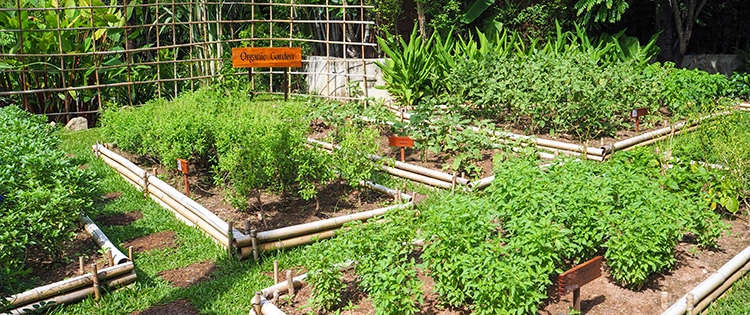
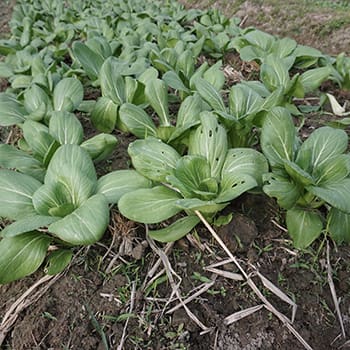
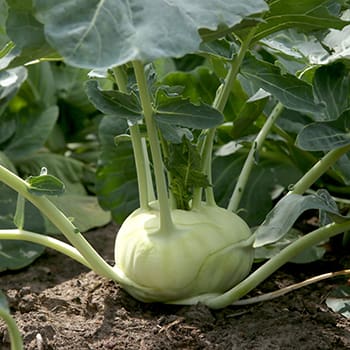
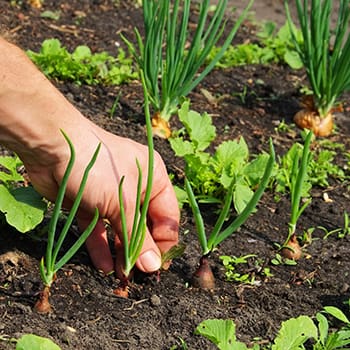
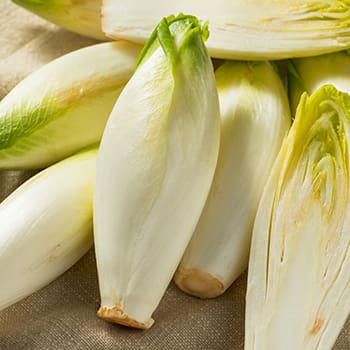
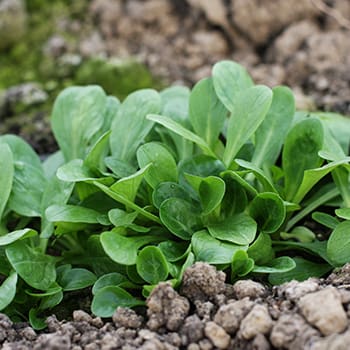
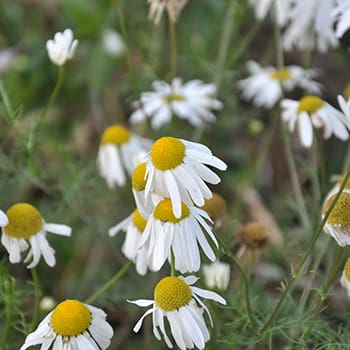
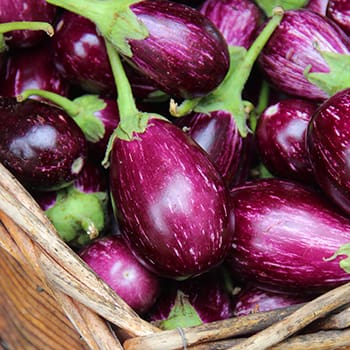
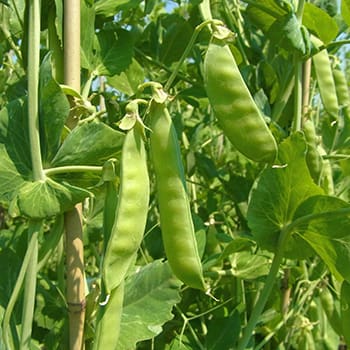
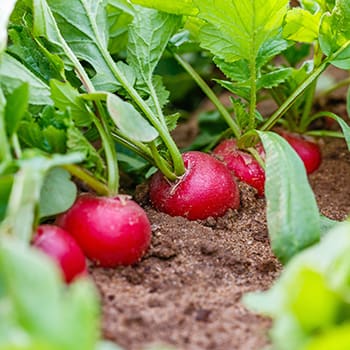
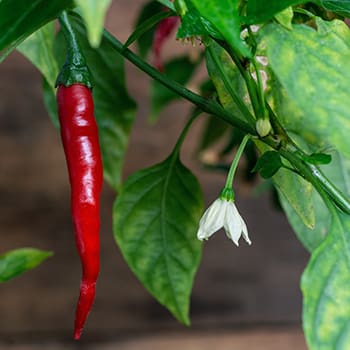
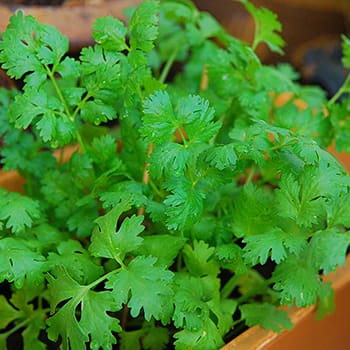








Thank you for the list. I wanted to add my vote for Parsley and give an honorable mention for Oregano.
This past summer, I planted a variety of herbs, including Parsley and Greek Oregano, in a small bucket garden while I was living in Northern Virginia. During the winter months with freezing temperatures and a heavy snow, the Parsley and Oregano proved hardy enough to survive. I brought these plants to Texas when I relocated.
They are now both thriving despite the winter snows and a long trip in the back of a U-Haul trailer.